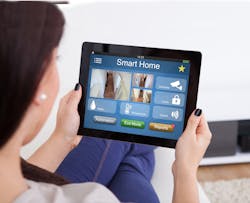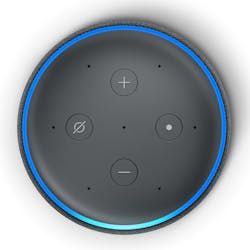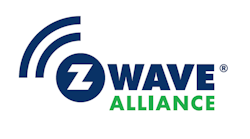This article originally appeared in the February 2021 issue of Security Business magazine. When sharing, don’t forget to mention @SecBusinessMag on Twitter and Security Business magazine on LinkedIn.
According to IDC’s recent report, devices that provide safety and security account for 18% of overall smart home device adoption. Playing a major role in the adoption and acceleration of smart home, security systems now encompass and are expected to interface with door locks, lighting, video and delivering notifications. Over the past year, homeowners have spent more time than ever before working, learning, and entertaining at home, creating a spike in the desire for home upgrades. With more time spent at home, families are recognizing the importance of adopting security devices to keep their home safe and secure.
As we enter 2021, I expect the adoption of smart home security products to continue to rise. Here are five prominent factors and trends that will impact the types of devices consumers consider when installing a system:
1. Interest in Voice-Controlled DevicesLook ma, no hands: The demand for voice-controlled entertainment, smart home, and home security devices increased greatly in 2020 and I expect that trend to continue in 2021. According to IDC, 67% of U.S. households own at least one smart speaker or smart display. With heightened awareness when it comes to touching surfaces and spreading germs, homeowners are looking for devices that can act on a simple voice command. The ability to control your home’s security system via verbal commands provides convenience to the end-user who no longer needs to use an app on a phone or tablet to activate the system. Voice activated systems also decrease the amount of surface area touched by multiple family members throughout the home.
2. Convenience of DIY Systems
No hassles, no scheduling challenges: Do it yourself (DIY) security devices give consumers the flexibility to set up and install home security systems on their own, in just a matter of minutes. On the market today there are DIY, professional-grade products that can be installed by the homeowner themselves easily and conveniently. Many consumers are looking to upgrade their home security, and they are looking to do so without spending too much money or dedicating a lot of time to renovations. Although we will see DIY installations continue to increase in 2021, there is still absolutely a need for professional installers. The professional install community should focus their business approach this year to include virtual walkthroughs and remote troubleshooting for DIY systems, taking steps to decrease the need to physically enter the home. There is also an opportunity for installers to upsell their services once a consumer comes to them; perhaps frustrated with their inability to get their system up and working, a desire to add advanced functionality and more devices, or to provide ongoing maintenance and expertise.
3. Improved Network Security
Protecting home, hearth and your network too: Homeowners are adding more smart home devices to their systems, but with that comes the need for increased network security. With more devices than ever before on the same home network, there are more opportunities for private information to be hacked and stolen. The need for products that ensure network security will be an important factor as consumers consider their options for smart home security devices in 2021. For example, Z-Wave devices give consumers optimal network security through the Z-Wave S2 security framework which requires a high level of security on all certified devices for the smart home, removing the risk of devices being hacked while they are included in the network.
4. Continued Need for Product Interoperability as the Ecosystem Grows
Security manufacturers will need to consider product interoperability as well as multifunctionality as the smart home market and options available to consumers increases. Consumers are looking for products that protect the home and can also be integrated with other smart home devices that they have previously installed. Smart security systems that are compatible with door locks, light switches, and sensors will increase in popularity as consumers purchase smart home devices that work seamlessly together when upgrading the home.
5. Popularity of Video Surveillance
Adding more value: As we enter 2021, I expect security systems with video surveillance features to stand out over other systems. Consumers are looking to outfit the home with new and improved smart home devices, and they are looking for quick and easy ways to focus on security.
A single camera located at the front door of the house will track home and car break ins, package theft, and any other suspicious activity. Not only will consumers lean towards video surveillance, but they will also evaluate the video quality of the device so they can easily track and view disturbances as they occur.
The home security market will continue to trend upwards as consumers prioritize the safety of their homes and families. The trends expected in 2021 provide opportunities for security companies to increase the value of their services and to provide customers with the products that fits their needs; for 2021 and beyond.
Mitch Klein is Executive Director of the Z-Wave Alliance. Request more info about the Alliance at www.securityinfowatch.com/10484821.




